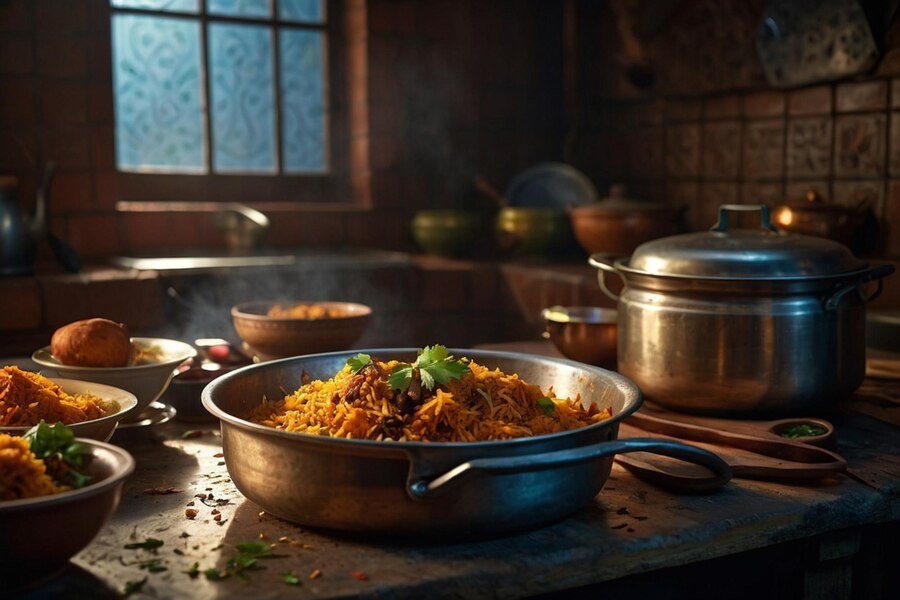Couscous, often regarded as a humble grain, is a culinary marvel that has transcended its origins to become a beloved staple in kitchens around the world. While its roots are deeply embedded in North African cuisine, couscous has spread across continents and cultures, becoming a versatile and nutritious ingredient that adds texture, flavor, and heartiness to a wide range of dishes. This article dives deep into the fascinating world of couscous, its history, nutritional benefits, cooking techniques, and how it continues to evolve in modern gastronomy.
The History of Couscous
Couscous originated in North Africa, particularly in regions that are now part of modern-day Algeria, Tunisia, and Morocco. For centuries, it has been a central component of Berber cuisine. Historical records show that couscous was being made and eaten as far back as the 13th century. However, its history may stretch even further into antiquity, as the exact timeline remains debated among food historians.
Traditionally, cous-cous was prepared by hand-rolling semolina wheat into small granules, which were then steamed and fluffed to perfection. Women in North African households typically made cous-cous in large quantities, preparing it for family meals, festivals, and communal gatherings. It was often served with savory stews, braised meats, and a variety of vegetables, making it a versatile and filling food for both everyday and celebratory occasions.
As North African cultures expanded and exchanged ideas with Mediterranean and Middle Eastern regions, cous-cous spread along trade routes. Today, it is enjoyed not only in North Africa but also in Europe, the Middle East, and even parts of North and South America.
Types of Couscous
Couscous comes in several varieties, each offering its own unique flavor, texture, and culinary uses. Below are some of the most popular types of cous-cous:
- Traditional Couscous: The smallest and most delicate variety, traditional cous-cous is made from semolina flour and requires minimal cooking time. It is commonly served as a side dish or the base for stews.
- Israeli Couscous: Also known as pearl cous-cous, this variety is larger than traditional cous-cous and has a chewier texture. It is often toasted before cooking, giving it a nuttier flavor that pairs well with salads and roasted vegetables.
- Lebanese Couscous: Known as Moghrabieh, Lebanese cous-cous is the largest of the cous-cous varieties. These pearls are about the size of chickpeas and are typically slow-cooked in stews, absorbing rich flavors from sauces and spices.
- Whole Wheat Couscous: A healthier alternative to traditional couscous, whole wheat couscous is made from whole wheat flour, providing more fiber and nutrients. It has a slightly nuttier taste and a denser texture, making it a popular choice for health-conscious consumers.
Nutritional Benefits of Couscous
Couscous is not only tasty but also packs a punch when it comes to nutrition. Here’s why it deserves a place in your pantry:
| Nutrient | Amount per 1 cup (cooked) | % Daily Value* |
|---|---|---|
| Calories | 176 | 9% |
| Protein | 6 grams | 12% |
| Carbohydrates | 36 grams | 12% |
| Dietary Fiber | 2 grams | 8% |
| Fat | 0.3 grams | 0% |
| Iron | 1.2 mg | 6% |
| Magnesium | 14.8 mg | 4% |
| Selenium | 43 mcg | 61% |
*Percent Daily Values are based on a 2,000-calorie diet.
- Low in Fat: Cous-cous contains almost no fat, making it a great option for those watching their fat intake. It provides a low-calorie base for rich and hearty dishes.
- Good Source of Protein: Although not as high in protein as legumes or quinoa, cous-cous still provides a decent amount of plant-based protein, making it a valuable addition to vegetarian or vegan diets.
- Rich in Selenium: One of the most notable nutrients in cous-cous is selenium. This powerful antioxidant helps protect cells from damage and supports immune function. Selenium also plays a role in thyroid health and may reduce the risk of certain chronic diseases.
- Provides Complex Carbohydrates: Cous-cous is a good source of complex carbohydrates, which release energy slowly and help maintain stable blood sugar levels. This makes it a suitable choice for maintaining sustained energy throughout the day.
- Versatile and Quick to Prepare: Cous-cous takes only a few minutes to cook, unlike grains like rice or quinoa that require longer cooking times. Its quick preparation time makes it a convenient option for busy households and professionals looking for a fast but nutritious meal.
Cooking Couscous: Tips and Techniques
Cooking cous-cous is incredibly simple, but there are a few techniques you can employ to elevate its flavor and texture. Here’s how to make the perfect cous-cous:
- Measure the Couscous and Liquid: For every cup of dry cous-cous, use one and a half cups of boiling water or broth. Using broth instead of water adds extra flavor to the final dish.
- Heat the Liquid: Bring water or broth to a boil, then remove it from the heat.
- Add the Couscous: Stir in the cous-cous, cover the pot, and let it sit for about five minutes.
- Fluff with a Fork: After the cous-cous has absorbed all the liquid, fluff it gently with a fork to separate the grains and give it a light, airy texture.
- Season and Serve: Cous-cous is like a blank canvas—it can take on the flavors of various seasonings, herbs, and spices. You can add olive oil, butter, salt, pepper, or any other flavorings that complement your dish.
Couscous in Modern Cuisine
Over the years, cous-cous has been integrated into cuisines worldwide, and chefs continue to experiment with this versatile grain. From salads to desserts, cous-cous can take on various roles in different types of dishes.
- Couscous Salads: Light and refreshing cous-cous salads have become a popular option for picnics and summer meals. They are typically mixed with chopped vegetables, herbs, nuts, and dressings like lemon vinaigrette or tahini sauce. These salads are not only tasty but also packed with nutrients.
- Stuffed Vegetables: Cous-cous is often used as a filling for stuffed vegetables, such as peppers, zucchini, and tomatoes. Mixed with spices, vegetables, and sometimes meat, the cous-cous expands and soaks up the flavors during cooking.
- Couscous Desserts: In Moroccan cuisine, cous-cous is occasionally used in sweet dishes. Prepared with milk, cinnamon, and dried fruits, it can be transformed into a warm, comforting dessert.
- One-Pot Cous-cous Dishes: Cous-cous is perfect for one-pot meals, where it can absorb the flavors of spices, meats, and vegetables all in one dish. This makes it an excellent choice for easy, flavorful weeknight dinners.
Couscous vs. Other Grains
While cous-cous is often compared to grains like rice or quinoa, it has its own set of unique properties. Unlike rice, which is a whole grain, cous-cous is a form of pasta made from semolina wheat. It is much smaller and cooks faster than both rice and quinoa. Quinoa, on the other hand, is higher in protein and contains all nine essential amino acids, making it a complete protein. Despite these differences, cous-cous holds its own as a nutritious and versatile option in the kitchen.
Conclusion
Couscous may be a simple dish at first glance, but its versatility, nutritional benefits, and rich history make it a global culinary treasure. Whether you’re whipping up a quick weeknight meal, creating a gourmet salad, or serving a hearty stew, cous-cous adapts beautifully to a wide range of flavors and textures. Incorporating cous-cous into your diet not only brings a delicious variety to your meals but also adds valuable nutrients that can support your overall health. So, next time you’re looking for a wholesome, quick, and adaptable ingredient, reach for cous-cous—it’s a little grain with a lot of potential.










